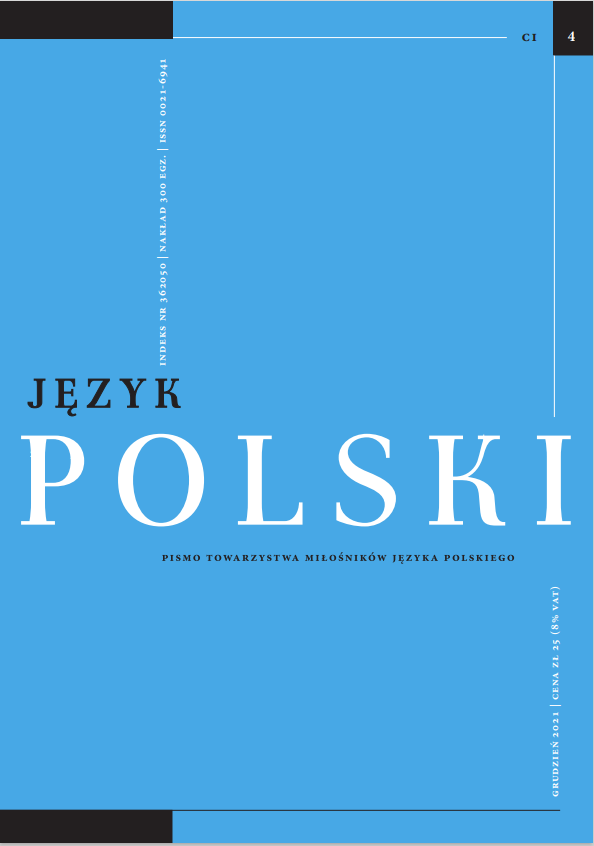O tajemniczej staropolskiej potrawie – giejślic (siódma woda po kisielu?)
About a mysterious old Polish dish – giejślic (siódma woda po kisielu ‘the seventh water after jelly’?)
Author(s): Sylwia Przęczek-KisielakSubject(s): Language and Literature Studies
Published by: Towarzystwo Miłośników Języka Polskiego
Keywords: language history; etymology; Old Polish language; culinary names
Summary/Abstract: The article is a lexicological study of an Old Polish dish giejślic, an entry listed in Słownik staropolski with the comment in the dictionary file: “The word may be German”. The author, referring mainly to German linguistic and historical-cultural literature (there are generally no Polish-language studies on this subject), tries to answer three basic questions: what was giejślic, is this word really a Germanism, what is in general its etymology and whether giejślic, sour soup and jelly are identical dishes. The result of this linguistic and historical search is probably the all-Slavic, and later also the Old Polish unit kisielica, not listed in Słownik staropolski, and borrowed by the Germans in the form of the geislitze lexeme with graphic and phonetic variants: geysslitz, giselitz, geislitz, geislaz, geislazn, geesliz, adopted by Polish later on in the form of the lexeme giejślic, yet meaning a dish slightly different than sour soup and jelly. The source of the idiomatic expression siódma woda po kisielu ‘the seventh water after jelly’ is not – as many sources claim – the slops in a jelly dish, but the fact that the jelly was boiled several times, adding water to the old leaven, so the jelly was thinned several times.
Journal: Język Polski
- Issue Year: 2021
- Issue No: 4
- Page Range: 60-74
- Page Count: 15
- Language: Polish

